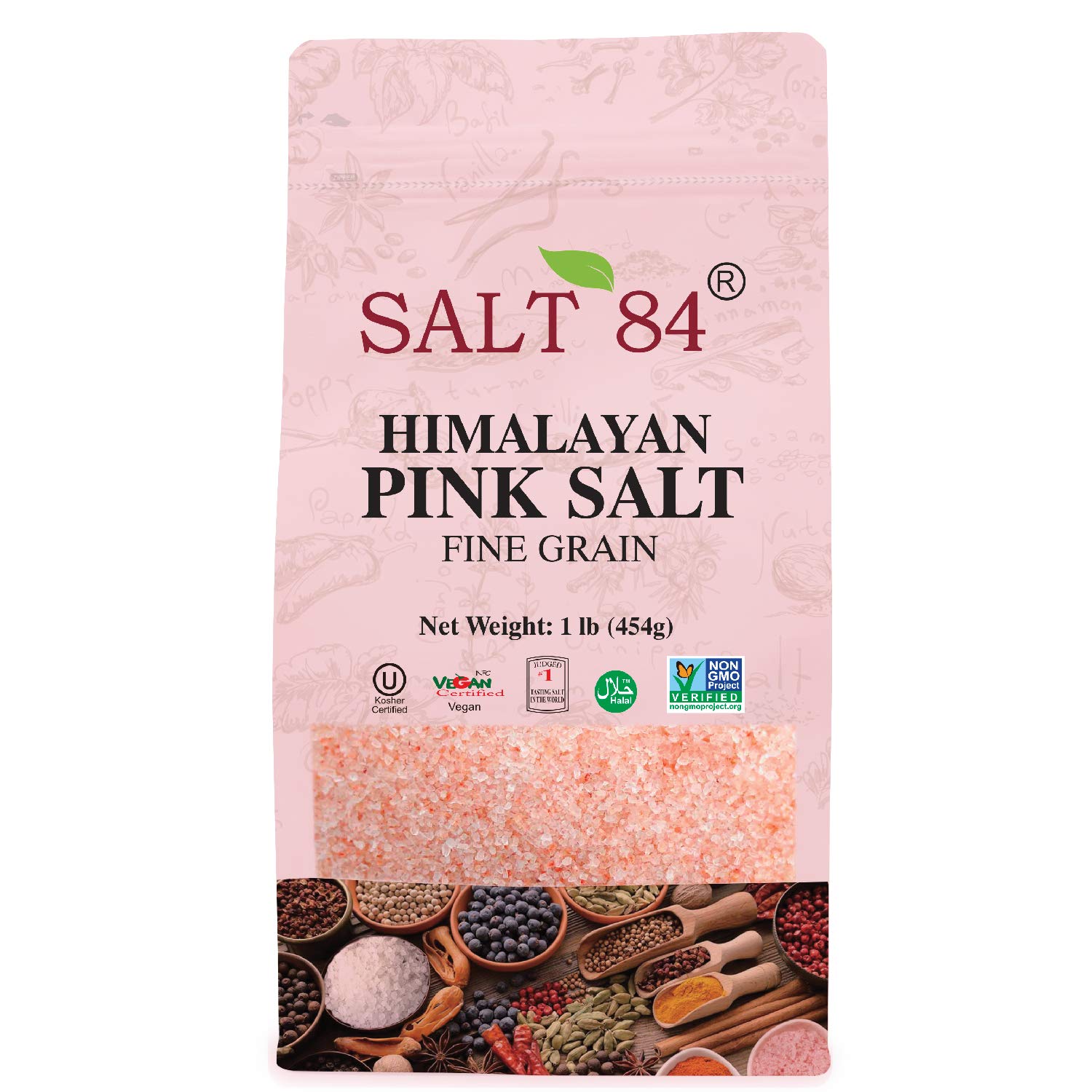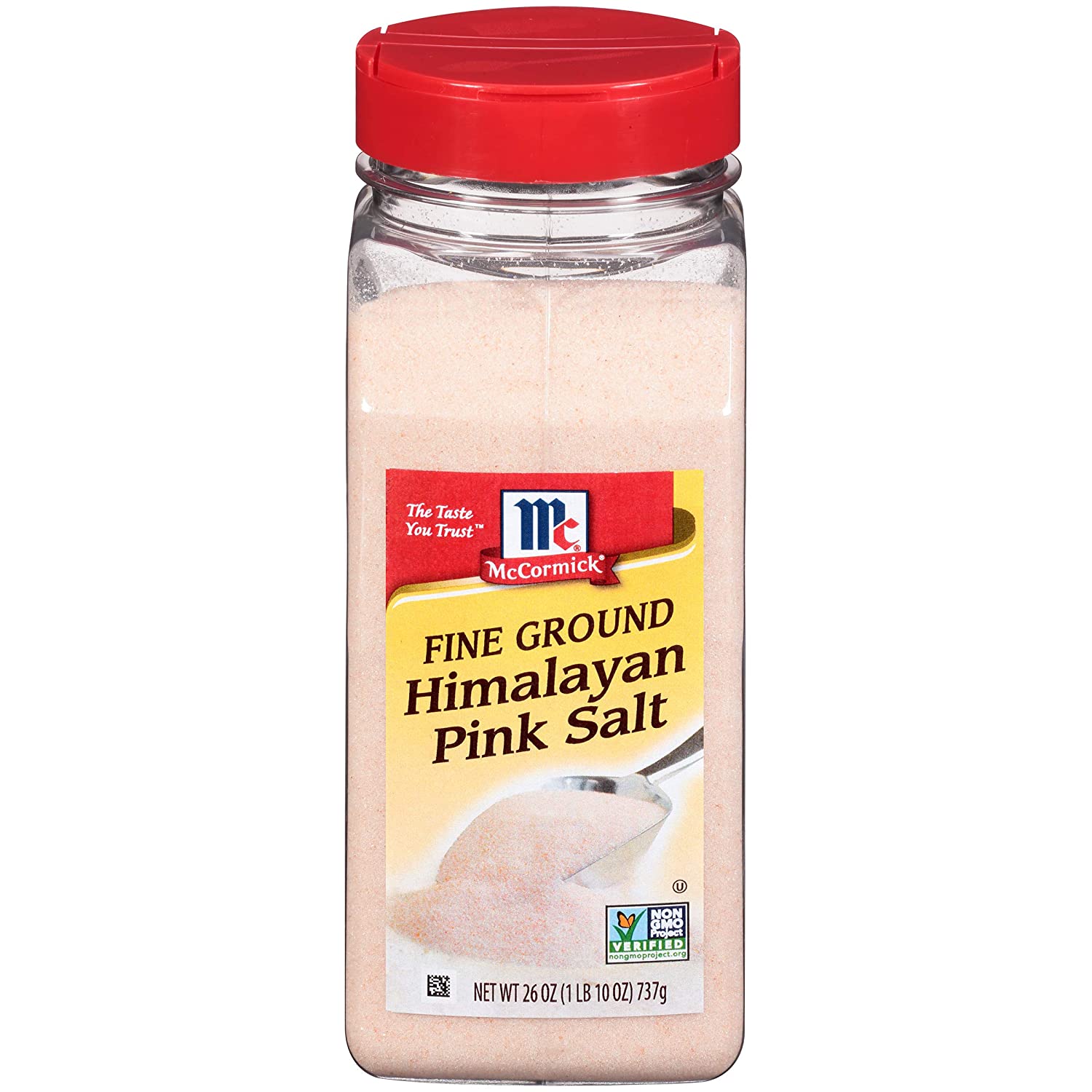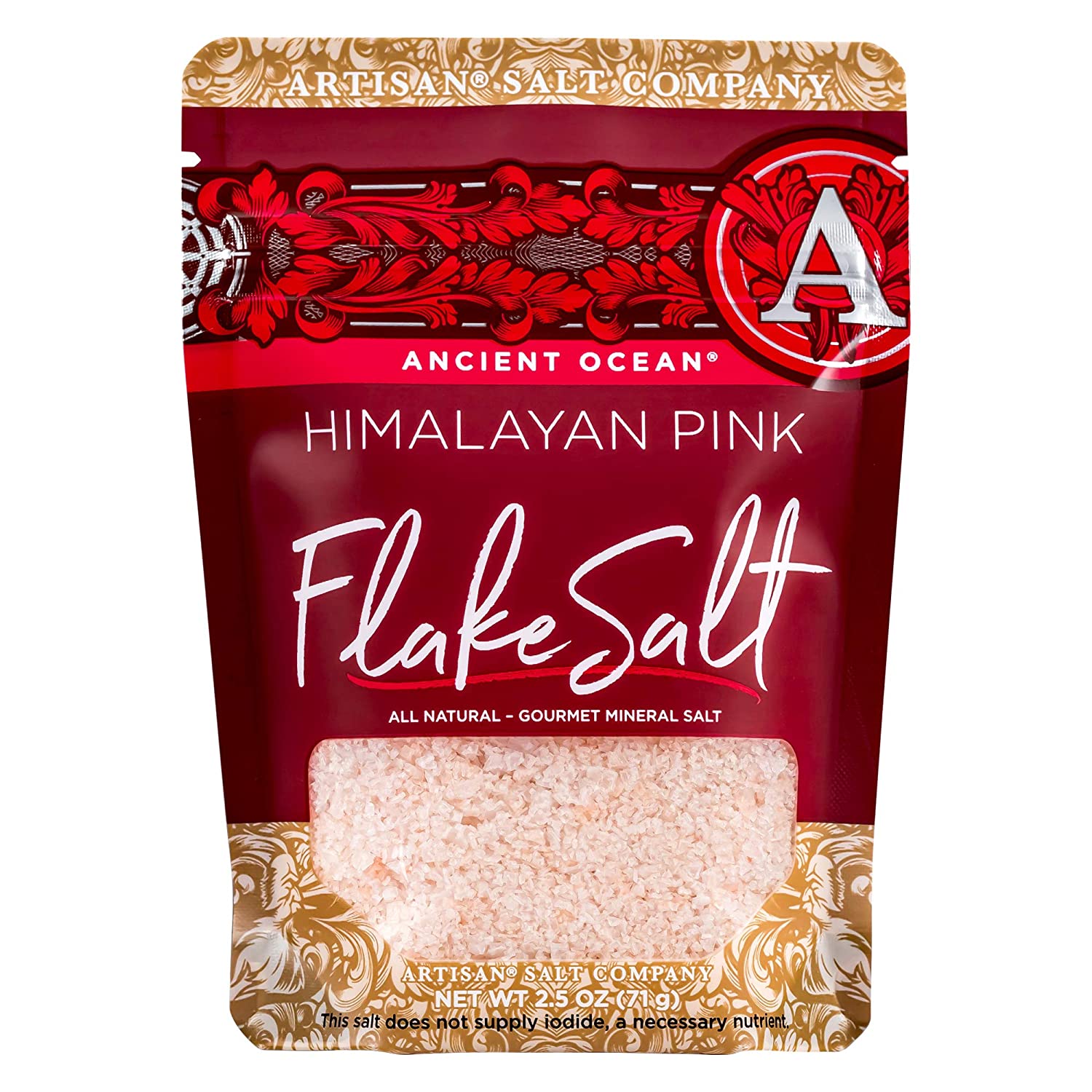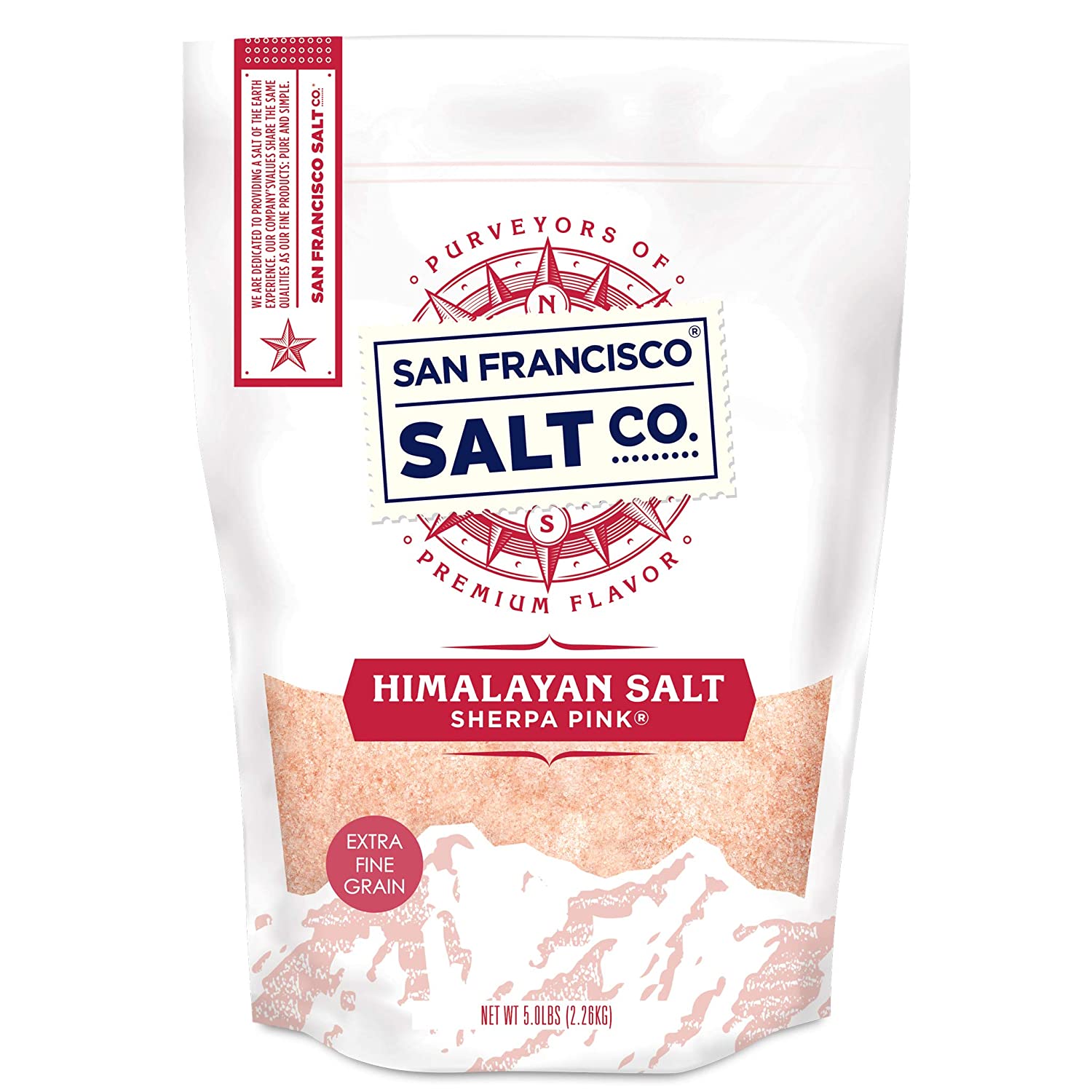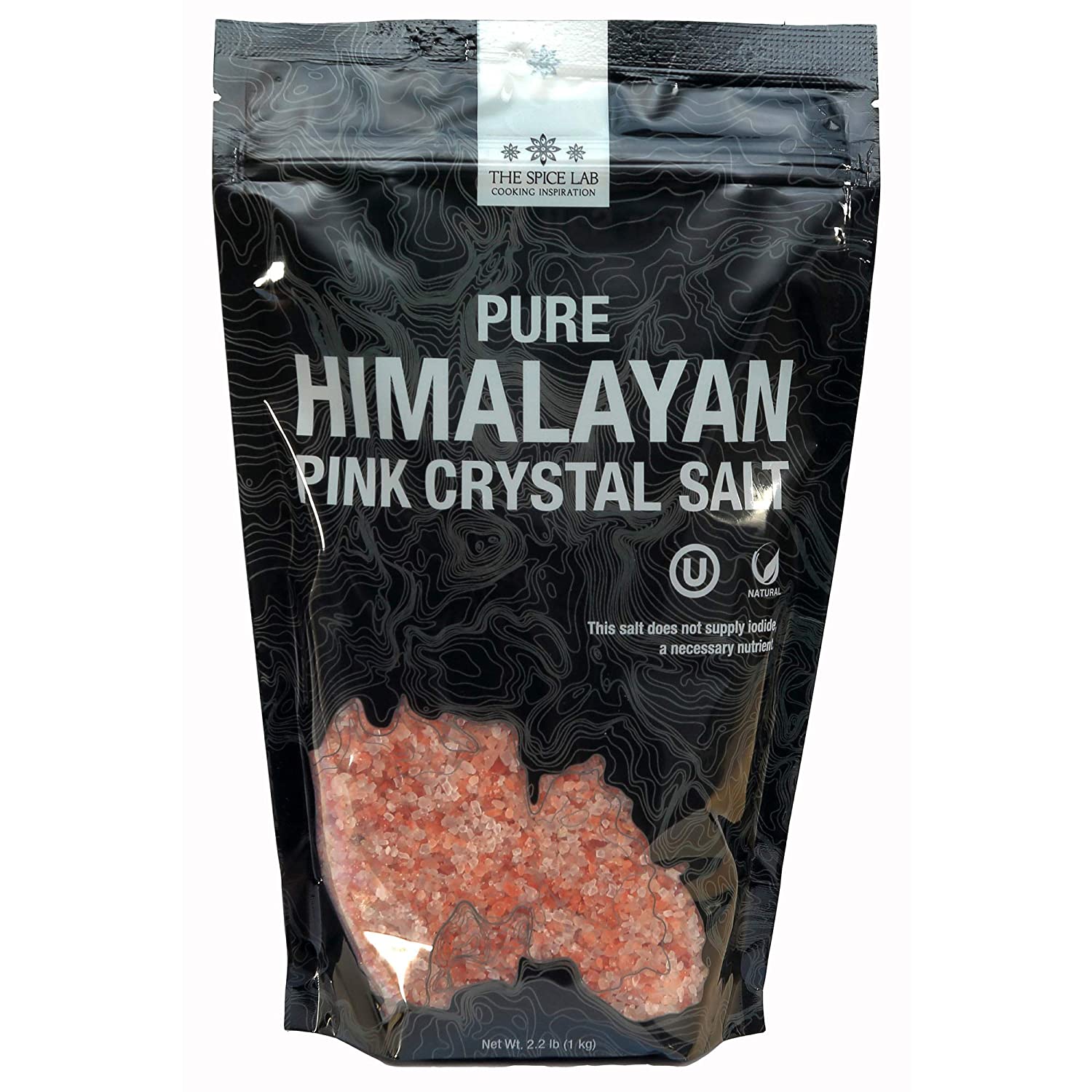Best Himalayan Salt
Most people love salt, and it is an important component of our diets when consumed in small amounts. One popular type of salt is mined in the Himalayan mountains of Pakistan. This type of salt has the highest amount of mineral content of any salt on our planet, and it contains many trace minerals and elements that could be helpful to our health. Some of these trace minerals, including iron, give this type of salt a pink color. As a result, it is called Himalayan pink salt.
Let’s find out about some of the most popular brands of Himalayan salt on the market today:
1. Editor’s Pick: Himalayan Chef Pink Salt, Fine Stand Up Bag
This is a stand up bag of 100% pure, natural Himalayan pink salt. It is mined primarily in the foothills of Pakistan’s Himalayan mountains. It looks great, and it has high mineral content. This makes the salt a great choice for adding to all your dishes. It contains trace elements that are important for health.
The crystals are high quality and gourmet food grade. They are fortified with additional nutrients and minerals such as iodine. This Himalayan salt is organic, ISO-certified, free from impurities, and Kosher-certified. The salt is unprocessed. It is hand selected, chiseled, and washed, and then dried in the sun.
This particular variety is fine, with crystals measuring 0 to 1 mm, which is perfect for most uses. However, it is also available in extra-fine (0 to 0.5 mm) and coarse (2 to 3 mm) versions. People tend to use the extra-fine version for table salt and the coarse variety when grinding.
This Himalayan salt is great for stimulating circulation, lowering blood pressure, and removing heavy metals from your body. Also note that the extra-fine and fine versions are great to use as bath salts to relax and soothe any muscle aches.
It comes in a one pound bag. The bag has a window so you can see the product easily.
One drawback is, some users have pointed out the salt is more white than pink overall.
Pros
- 100% pure, natural Himalayan pink salt
- Gourmet food grade
- Has high mineral content and contains trace elements important for health
- Fortified with additional nutrients and minerals such as iodine
- Unprocessed; hand selected, chiseled, and washed; and dried in the sun
- Organic, ISO-certified, impurity-free, and Kosher-certified
Cons
- Some users say the salt is more white than pink
2. Runner Up: McCormick Fine Ground Himalayan Pink Salt
This beautiful pink Himalayan sea salt has a refreshing, crisp taste. Use it to add some delicious salty flavor to your marinades, rubs, baked goods, meats, and even to line your margarita glass rims. It is finely ground and works well as a table salt to sprinkle over your cooking.
It is made by a very popular herb and spice manufacturer in the USA. The salt is sourced from mines in the Himalayan mountain range. It is rich in magnesium, calcium, and other trace minerals.
Each non-breakable plastic container contains 26 ounces of pink salt. You can also buy this in a larger size bottle.
One drawback is it is a bit expensive.
Pros
- Beautiful pink Himalayan sea salt
- Refreshing, crisp taste
- Finely ground and works well as a table salt
- Sourced from mines in the Himalayan mountain range
- Rich in magnesium, calcium, and other trace minerals
Cons
- Price
3. Best Ethical: SaltWorks Ancient Ocean Himalayan Pink Salt
This authentic Himalayan pink salt is harvested by hand from an ethical source in the Himalayan mountains. These beautiful, delicious flakes are prized for their fabulous colors, which include pearly white and various shades of pink. Use it on your grilled meats and as a fine table salt.
It is made with SaltWorks’ Optically Clean process, which ensures this product is high quality and super clean. It is all-natural, unrefined, and organic. It is rich in trace minerals, which give the salt its stunning range of colors. It is Kosher-certified, free of allergens and GMOs, and cruelty-free.
It comes in a zip-top pouch that seals in freshness. It holds 2.5 ounces of sea salt.
Since it is all-natural, it does not contain any additives such as iodine. It is covered in charcoal, which can cover your fingers, so make sure to wash up after use, or use a spoon instead of your hands.
Pros
- Harvested by hand from an ethical source in the Himalayan mountains
- Prized for their colors, which include pearly white and shades of pink
- Rich in trace minerals, which give the salt its stunning range of colors
- High quality and clean; all natural, unrefined, and organic
- Kosher-certified, free of allergens and GMOs, and cruelty-free
- Comes in a zip-top pouch that seals in freshness
Cons
- No added iodine
- Covered in charcoal; use a spoon so it does not get on your fingers
4. Best Extra Fine: Sherpa Pink Gourmet Himalayan Salt, Extra-Fine Grain
This extra-fine grain of gourmet Himalayan pink salt is a great addition to all your meals. Use it to season meats, veggies, salads, stews, and soups. It works well with any type of cooking, including baking. The beautiful color ranges from pink to light red, due to the minerals contained within the salt.
Although this particular variety is extra-fine (0 to 0.5 mm), this salt is also available in powder (0 to 0.2 mm), fine grain (0 to 1 mm), and coarse grain (2 to 3 mm) versions. The powder is great for dusting popcorn and nuts; the extra-fine is perfect for salt shakers; the fine grain is good for general cooking; and the coarse is suited towards grinders.
This salt is high quality and food grade. It is organic and Kosher-certified. It does not contain any GMOs, MSG, soy, dairy, gluten, or anti-caking agents.
You can also try using this salt in your bath to soothe muscle aches and pains. Or mix it with your shower gel to create a scrub for exfoliation.
This salt comes in a five pound bag.
One thing to note is this salt does not have any added iodine, which is a crucial part of our diet normally found in regular table salt. Also, as it is an all-natural rock salt, it may take a long time to dissolve.
Pros
- Extra-fine grain, gourmet Himalayan pink salt – perfect for salt shakers
- Works well with any type of cooking, including baking
- Beautiful color ranges from pink to light red
- High quality, food grade, organic, and Kosher-certified
- Does not contain GMOs, MSG, soy, dairy, gluten, or anti-caking agents
- Use in bath to soothe muscles; mix with shower gel to create an exfoliant
Cons
- All-natural quality may make it take a long time to dissolve in water
- Does not contain added iodine
5. Best Coarse: The Spice Lab Himalayan Salt, Coarse
This dark pink Himalayan crystal salt looks pretty on display in a clear salt mill. It is all-natural and hand-mined in the salt beds of the Himalayan mountains. It is dense with nutrients and minerals needed for good health. It is a coarse salt, with crystals measuring from 2 to 3 mm, and works well in a grinder.
This salt is a useful remedy for a variety of health concerns. People use it to stimulate circulation, lower blood pressure, and help remove toxins. It is approved for use with Keto and Paleo diets.
It contains iron and 84 trace elements for healthy nutrition. The trace elements influence the color, which can range from sheer white to pink to deep red.
It is food grade and Kosher. Use it to season your meats, veggies, eggs, pasta, salads, soups, and so much more. It is handy to include in your baked goods. You can also sprinkle some in your bathtub to ease aching muscles.
Each bag contains 2.2 pounds of salt. Other sizes are available.
One drawback is, as it is all-natural, it does not contain iodine. Users have also mentioned that this salt may contain small rocks or stones which can be bothersome when biting down.
Pros
- Dark pink Himalayan crystal salt looks pretty on display
- All-natural, hand-mined in the Himalayan mountains
- Dense with nutrients and minerals needed for good health
- Coarsely ground, useful in a grinder
- Contains iron and 84 trace elements for healthy nutrition
- Food grade and Kosher
Cons
- Does not contain added iodine
- May contain small rocks or stones which can be bothersome when biting down
All about Himalayan salt
Himalayan salt has been trending for some time in the Western world. It is claimed to offer incredible health benefits, and it contains many minerals needed in our diet. It is beautiful, too, being naturally pink and dark red. But is it actually better than regular table salt?
Is himalayan salt good for me?
First, let’s find out about salt in general. This is something we need in our diet. It contains 98% sodium chloride. Salt is important for many biological functions, including muscle and nerve contractions.
Salt is made either by extracting from underground salt mines or evaporating from salt water. Normally, table salt is refined after being extracted, to remove extra minerals and impurities. Iodine is often added as it is needed in our diets. And sometimes anti-caking agents are used to absorb moisture.
Himalayan salt v.s. table salt
Too much salt can lead to high blood pressure or heart disease. Some people think Himalayan salt is a healthier alternative to table salt.
Himalayan salt is extracted from the salt mines in the Himalayan mountains in Pakistan. The salt mines in this region formed in ancient times when large bodies of water underwent evaporation. Himalayan salt is thought to include remnants of the original sea from salt mines that were 5000 feet underneath the Himalayan mountains. This salt has underwent a lot of pressure over thousands of years, and this pressure has made it very pure.
Himalayan salt is extracted by hand and undergoes very little if any processing. As a result, it is more natural than table salt. It is unrefined, and does not contain additives. Himalayan salt contains up to 84 trace minerals and elements, which is a lot more than regular table salt. These trace minerals include calcium, potassium, magnesium, and others. One of these trace elements is iron; this and other elements add to Himalayan salt’s distinctive pinkish-red color.
How to use Himalayan salt
There are lots of ways to use Himalayan salt. The most common use is in cooking. Use it to sear, grill, or do any type of cooking where you want a salty flavor. You can also use it as a table salt. You can buy this salt as a coarse, fine, or extra-fine grind.
Himalayan salt is thought to have numerous health benefits, such as reducing the signs of aging, improving respiratory disease, improving sleep, regulating blood sugar, increasing libido, and balancing the body’s pH. It is hard to say if these claims are actually true, but Himalayan salt does offer health benefits over regular table salt, because it does not contain additives or artificial ingredients.
What to consider when purchasing Himalayan salt?
The only drawback of Himalayan salt is it does not contain iodine, so if you use this type of salt, you will have to find another source of this important element in your diet.
You can also use Himalayan salt for non-dietary measures. Try sprinkling it in your bath water to soothe your tired muscles and make your skin softer.
Himalayan salt is wonderful to have in your kitchen, to use as table salt, in cooking and baking, or in various other ways. Whether or not this salt actually improves health remains a question to be answered but one thing is for sure – it tastes great. Try some today.
FAQS
Why is Himalayan salt pink?
Salt can be produced in a bunch of different ways, all of which are impacted by their surroundings. Himalayan salt gains its cheerful disposition from scant amounts of magnesium, potassium and calcium – all useful compounds for you body to break down.
How much sodium does 1 tsp of Himalayan pink salt contain?
Himalayan salt has a noticeably lower sodium content per teaspoon than traditional table salt. For every 1 tsp of table salt you ingest about 2,300 milligrams of sodium. Meanwhile, Himalayan salt sits at 1680 milligrams per tsp. Keep in mind that Himalayan salt, for all its extras, is really just salt. It carries with it all the same dietary concerns that those on a salt-scant diet should be on the lookout for.
How much Himalayan salt should I have per day?
You should never have more salt, Himalayan or otherwise, than recommended by your doctor or general practitioner. With that said, for an adult American the recommended limit is 2,300 milligrams. And yes, that does mean 1-tsp of table salt is your daily dose. Using Himalayan salt allows for you to scrape out an extra ½-tsp or so of salt for those watching their intake.
What minerals are in Himalayan salt?
As mentioned above the big three for Himalayan salt are magnesium, potassium and calcium – although there are trace amounts of iron as well. When it comes to nutritional value Himalayan salt is slightly lower in sodium when compared to table salt. This is, again, due to have a wider variety of minerals in its composition. As such Himalayan salt can be a useful substitute for those experiencing high blood pressure. With that said, SousVideGuy highly recommends checking with a medical professional before making any sort of dietary changes.
What to consider when purchasing Himalayan salt?
Himalayan salt uses a grade system to indicate quality. Higher quality Himalayan salt tends to have a kaleidoscopic array of colours per crystal – from deep pinks to light reds. Knock-off Himalayan salt is extremely common on the open market. You can tell the cheap stuff apart from the real, good-quality salt through coloration and light. Cheap Himalayan salt is typically an extremely pale pink with little variation in colour. Real Himalayan salt is also slightly stick and rough, and will not fully dissolve in water. You can also hold the salt crystals up to the light to check for color variation as well.

